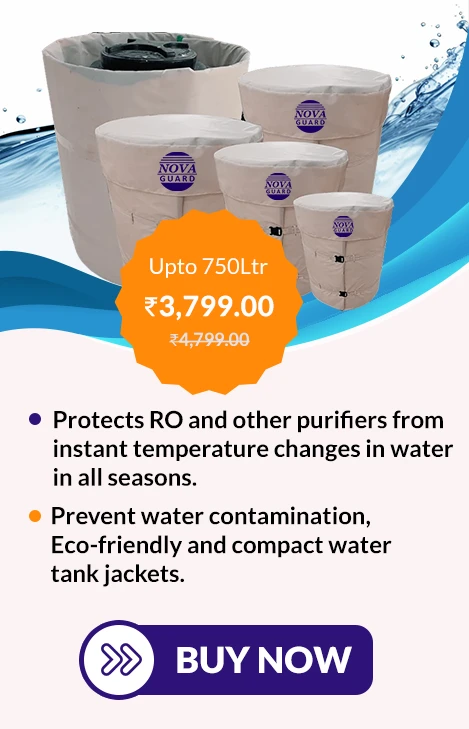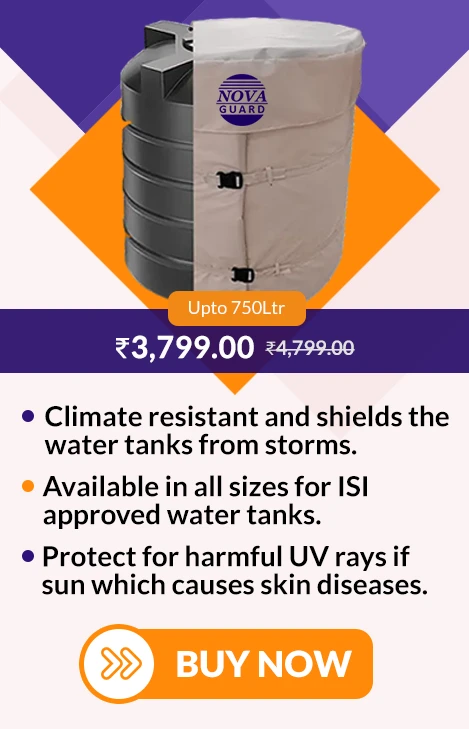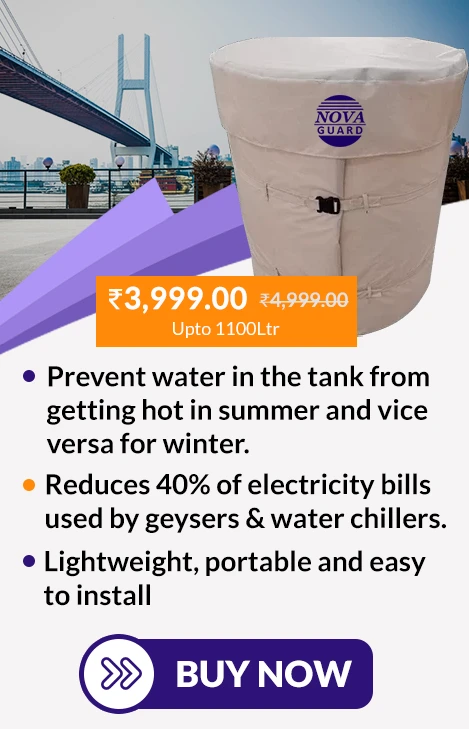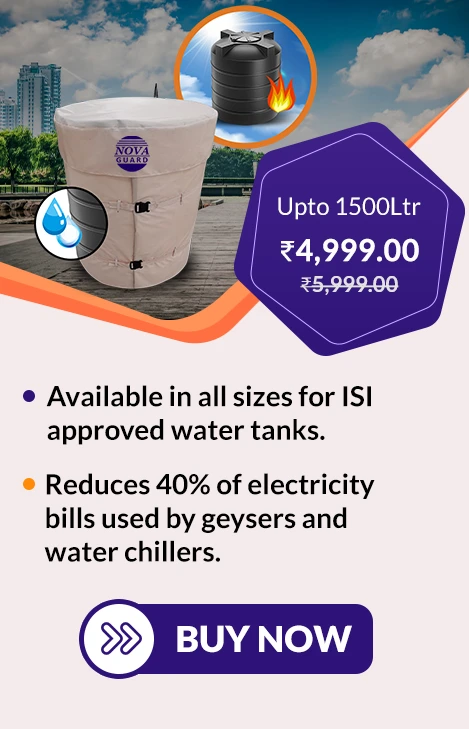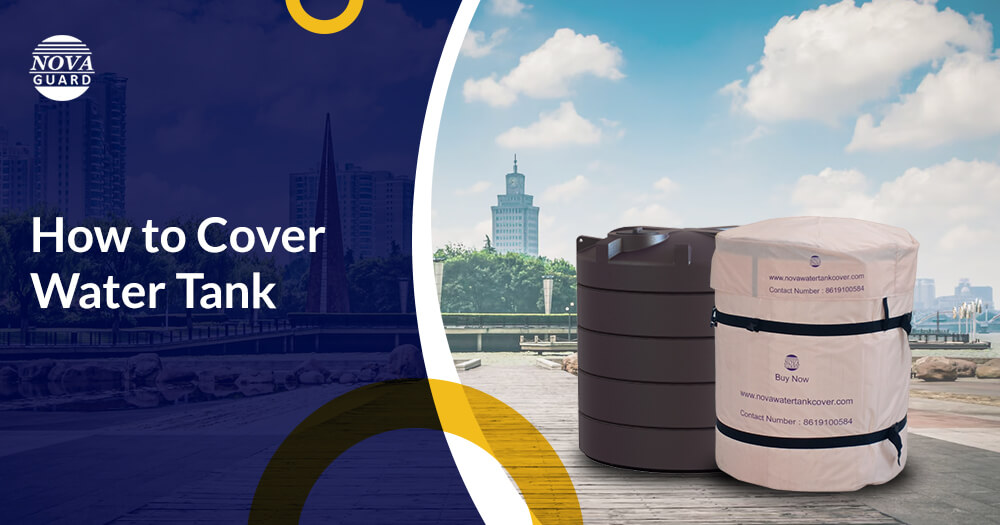
Publish on: Aug 22, 2024 Updated on: Aug 22, 2024
How to Cover Water Tank?
Did you know? If you don’t maintain your water tank properly, then it can fill with dust, insects, contamination, and damage, and it is surely not useful for any purpose.
That’s why maintaining a water tank is the most crucial thing to ensure the safety of the water tank and quality water for usage. But how to cover water tank?
Water tank covers are the best solution for maintaining your water tank. You can wrap up the water tank with an insulation cover to keep the inside water temperature balanced in all seasons, ensure high-quality water, improve the water tank lifespan, and prevent contamination.
However, most homeowners don’t know the potential of water tank covers and how covering a water tank can be so beneficial. Don’t worry!
In this article, we will understand everything about water tank covers, their importance, the step-by-step process to cover a water tank properly, and some common mistakes you must avoid.
Types of Water Tanks and Their Specific Covering Needs
There are different types of water tanks available on the market, each with unique materials and properties. So, covering the water tank also comes with different needs. So, here are some common types of water tanks and their specific covering needs. Let’s find out!
1. Plastic Water Tanks
Plastic water tanks are the most commonly used water tanks globally. The reason behind its huge popularity is its versatility in shapes/sizes, lightweight, high-resistant, cost-efficient, and easy to install. These plastic water tanks are made up of polyethylene and are often used in residential and commercial areas.
Covering Needs: These plastic water tanks are quite sensitive to UV rays and badly affect the water tank, including damaging the plastic over time, affecting the water temperature, increasing leaks, causing contamination, and making it impure for any usage. That’s where UV-resistant insulation covers are the best solution for plastic water tanks, covering the entire surface, protecting it from harmful UV rays, and preventing damage.
2. Concrete Water Tanks
Concrete water tanks are the most durable and robust tanks. These types of water tanks are used for large and long-lasting storage needs and are constructed on-site using concrete. These types of water tanks are mainly built for large-scale commercial or industrial areas such as agriculture, firefighting, and mineral use.
Covering Needs: Unlike plastic tanks, concrete tanks do not have issues in durability because of harmful UV rays, but the inside water temperature can vary as per the seasons, which leads to contamination and debris. As these are large water tanks, then, there are different covering needs. It required a heavy-duty plastic cover to wrap the concrete tank, ensure the inside temperature was balanced in all seasons, and keep the water quality good.
3. Metal Water Tanks
Metal water tanks are the most durable and low-maintenance options. These metal tanks are made up of steel, stainless steel, and aluminum. These types of water tanks are generally made with the purpose of long storage needs.
Covering Needs: Meta water tanks have a bad impact of UV-rays on the metal water tanks because they can directly absorb the heat, affect the inside water temperature, and lead to rust and degradation. This type of water tank requires metallic covers to protect it from UV rays, prevent rust, maintain a balanced inside temperature, and ensure longevity.
Types of Water Tank Covers
Here are some common materials used for water tank covers:
1. Water Tank Insulation Cover
A water tank insulation cover is a protective cover that wraps on the surface of a water tank and protects the water tank from contamination, leakage, and cracks. It will keep the inside water temperature balanced and protect the tank from extremely bad weather conditions. These insulation covers are multi-layered, and heat-resistant insulation is flexible to fit all sizes of water tanks and easily installed within minutes.
2. UV-Resistant Plastic Covers
UV-resistant plastic Covers are protective covers that are specially designed for water tanks to protect from harmful UV rays. These types of covers are used for those water tanks that are placed in extreme summer conditions and have direct UV-ray impact. This type of material contains UV-resistant properties and waterproofing, is lightweight, and is durable enough to withstand extreme sunlight without degradation. It will protect the water tank from UV-ray damage, enhance its lifespan, keep the inside temperature balanced, and ensure pure water quality.
3. Metallic Covers
Metallic covers are the strongest and most durable covers that are used to protect those large metal water tanks that are directly under the UV rays and damage the tank material. These cover materials are heat-resistant, control the inside water temperature, and reduce heat absorption.
Step-by-Step Guide on How to Cover Water Tank
Here’s the step-by-step guide to covering a water tank:
Step 1: Measuring the Tank
The very first step to take while covering your water tank is to measure it accurately. Measure the tank’s height and diameter, as well as other areas like pipes or vents. Then note down these measurements to ensure you cut the cover as per the measurement to avoid extra parts and that the cover fits the tank properly.
Step 2: Choosing the Right Material
Once you have accurate measurements, it’s time to choose the right material for the insulation cover that fits your water tank needs. A thermal water tank cover is a cost-effective and high-resistance option, which ensures that it protects the water tank from harmful UV rays, keeps the inside water temperature balanced, and maintains water quality.
Step 3: Preparing the Cover
Now, you need to cut the insulation cover as per the measured size. Also, you can leave a bit extra space for later adjustments. By cutting the insulation cover, you can ensure that the water tank cover is fit with the required size and tightly seal the tank to insulate effectively.
Step 4: Securing the Cover Properly
It’s time to wrap the insulation cover over the water tank. Make sure to follow the given instructions carefully to insulate the tank properly with the help of straps and clamps. Also, the installation process depends on the water tank; some insulation covers require professional help to wrap the insulation cover.
Step 5: Regular Maintenance and Inspection
Regular inspection is one of the essential things after wrapping up the tank to ensure there’s no damage or loosening. Otherwise, it affects the insulation efficiency. You can immediately repair it with regular inspection if any damage occurs.
Some Common Mistakes to Avoid
Here are some common mistakes you must avoid while covering a water tank:
1. Inadequate Coverage
One of the most common mistakes homeowners make while covering a water tank is not covering the tank fully or tightly. If there’s a small gap, improper fitting, or the cover size is small, then the insulation will not work effectively, and there will be some ways UV rays will pass inside the tank and not be able to maintain the inside temperature and damage. So, it’s very important to wrap the entire water tank with the insulation cover and ensure there’s no way left for the sun to pass the UV rays to insulate effectively.
2. Using Non-UV Resistant Materials
Some homeowners think that covering material doesn’t matter while covering a water tank. Well, it is if the water tank is placed directly under the sun with high exposure. Make sure to use a UV-resistant insulation cover for covering the water tank. Otherwise, a non-UV-resistant cover will easily crack, degrade, and make space to let the sun heat flow, affecting the inside water temperature and degrading durability.
3. Neglecting Regular Maintenance
If you just cover the water tank with the right insulation cover, then it doesn’t mean the job is done here. A time-to-time inspection is required to see if there’s any leakage, gap, loss, or debris that needs immediate fixing in the cover and to ensure that the cover works efficiently.
Conclusion
Covering a water tank is more than just to prevent dirt on the surface. Having the right insulation cover for the water tank will keep the inside water temperature balanced, protect the tank from damage, keep the water quality high, and improve the lifespan of the water tank. Now, you know how to cover water tank and why it plays a crucial role in keeping the water tank long-lasting and other benefits. So, if you are ready to take numerous advantages of covering a water tank and looking for the best quality water tank cover, then explore Nova Guard, a trusted brand for finding the best quality and high-resistant water tank covers for all sizes of tanks at the most affordable prices.
FAQs
1. How do I cover my water tank?
There are many budget-friendly insulation covers available in the market for all sizes of water tanks. You can find the right insulation cover for your water tank and wrap the entire tank properly.
2. Should a water tank be covered?
Yes, a water tank must be covered, especially those water tanks that are placed directly under the sun to protect from harmful UV rays, which can cause several issues like contamination in water, unbalanced temperature, and the tank.
3. How do I protect my water tank?
You should choose a high-resistant insulation cover that can keep your water tank protected from UV rays and extreme weather conditions.
4. How do I cover my water tank in the summer?
There’s a special UV-resistant or thermal insulation cover available on the market that can protect your water tank from the sun’s harmful rays and ensure it reflects back the heat to its source so as not to damage the tank.

